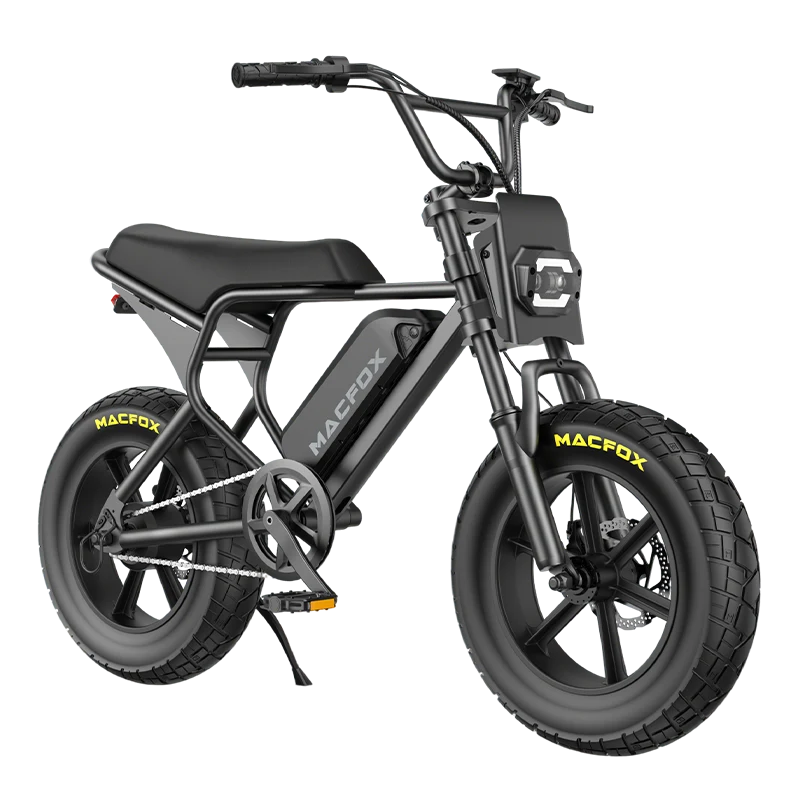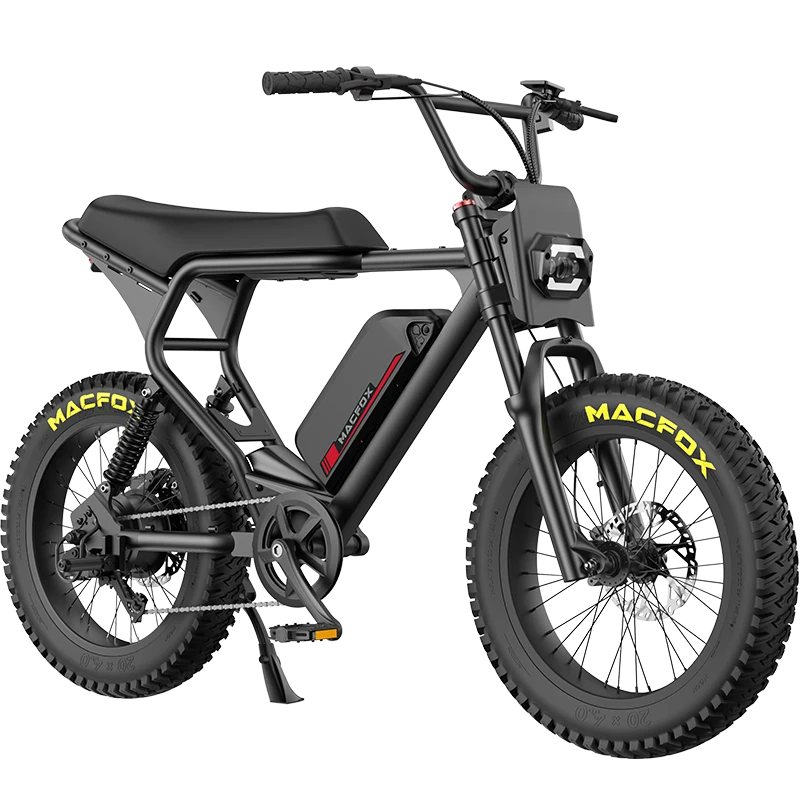Electric bicycles, commonly known as e-bikes, are increasingly recognized as a cornerstone of the global fight against carbon emissions and climate change mitigation. These vehicles cleverly blend the best of traditional bicycles with advanced electric propulsion, resulting in a groundbreaking, environmentally friendly and efficient form of transportation. This detailed paper delves into the far-reaching impact of e-bikes on reducing carbon footprints, their advancing technological developments, and their key role in reimagining urban transportation, ultimately furthering environmental protection and enhancing public health.
The Carbon Footprint of Transportation
The realm of transportation significantly contributes to worldwide carbon emissions, principally owing to the dependence on gasoline-fueled vehicles. E-bikes emerge as a formidable solution to attenuate these emissions. Their operation, devoid of emissions, presents a stark contrast to the carbon dioxide and assorted pollutants discharged by traditional vehicles. By choosing e-bikes over automobiles for shorter journeys, individuals can considerably lessen their carbon imprint. This segment offers an in-depth comparative evaluation of emissions between e-bikes and conventional vehicles, accentuating the former’s superior energy efficacy and eco-friendliness. Additionally, it scrutinizes how e-bikes are instrumental in diminishing the transportation sector's overall emissions, thereby underscoring their potential in global carbon reduction endeavors.

E-Bikes vs. Conventional Vehicles
Emissions vary significantly between e-bikes and standard vehicles. Electric bicycles powered by electricity do not emit pollutants during operation, while traditional vehicles emit a variety of toxic gases, especially carbon dioxide, exacerbating air pollution and the greenhouse effect. This section of the article provides an exhaustive comparison of emissions from these two modes of transport, including statistical insights and real-world impact assessments. Switching to electric bikes for short daily commutes can significantly reduce environmental degradation. In particular, commuting to get off work using the electric commuter bike launched by Macfox can significantly reduce urban air pollution and greenhouse gas concentrations.
Energy Efficiency of E-Bikes
E-bikes are lauded for their outstanding energy efficiency. They require substantially less energy per mile compared to automobiles, motorcycles, and even public transit systems. This efficiency not only aids in reducing energy consumption but also is pivotal in lessening greenhouse gas emissions. Presuming the electricity for e-bike charging is sourced from renewable energies, the environmental benefit is even more pronounced. This section probes into the energy consumption patterns of e-bikes, juxtaposing them against other transportation means, and underscores the ecological advantages stemming from their heightened energy efficiency.
Advancements in E-Bike Technology
The escalating popularity of e-bikes is propelled by notable technological innovations. These enhancements encompass advancements in battery technology, motor efficiency, and overall design, thus amplifying the allure, performance, and range of e-bikes, rendering them an increasingly viable option for a wider range of commuting requirements and distances.
Battery Innovation
The crux of an e-bike’s efficiency resides in its battery technology. Contemporary e-bikes boast advanced lithium-ion batteries, celebrated for their extended lifespan, high energy density, and environmental compatibility, especially when juxtaposed with antiquated battery types such as lead-acid. This section delves into the evolution of e-bike batteries, exploring how advancements in battery technology have rendered e-bikes more sustainable in terms of energy consumption and ecological impact. The discourse also encompasses the lifecycle of these batteries, from production to recycling, and their contribution to the overall environmental footprint of e-bikes.
Motor Efficiency
The efficacy of e-bike motors has undergone remarkable enhancements, contributing to their burgeoning popularity. Modern e-bike motors offer potent assistance without significant battery depletion, facilitating extended rides on a single charge. This reduced need for frequent recharging diminishes overall energy consumption and, consequently, the environmental impact. This section presents a thorough analysis of motor efficiency in contemporary e-bikes, exploring their operational dynamics, energy consumption patterns, and the benefits they proffer in terms of augmented range and minimized environmental footprint.
Related Reading: How Do E-Bikes Work?
E-Bikes and Urban Mobility
E-bikes are revolutionizing urban mobility, offering an efficient resolution to common urban transportation quandaries such as traffic congestion and limited parking. This article part examines how e-bikes are enhancing urban mobility by providing a practical substitute to traditional transportation methods, thus aiding in the reduction of traffic congestion and pollution in cityscapes.
Reducing Traffic Congestion
E-bikes excel in maneuvering through traffic, presenting a nimble alternative to automobiles in congested city areas. Their agility not only hastens travel times but also minimizes vehicle idling, a notable contributor to urban air pollution. This segment focuses on the impact of e-bikes in mitigating traffic congestion, discussing their role in making urban transit more efficient and less polluting. It also addresses the broader implications of reduced traffic congestion on urban living, encompassing improved air quality and an enhanced quality of life.
Accessibility and Inclusivity
E-bikes are remarkably inclusive, catering to a diverse user base, including those who may find traditional cycling arduous. This accessibility fosters broader adoption of sustainable transportation options in urban settings. This section delves into how e-bikes are rendering sustainable transportation more accessible to varied demographics, thereby championing a more inclusive approach to urban mobility. It discusses the design attributes that render e-bikes suitable for a wide range of users and how this inclusivity is pivotal in steering the transition towards more eco-friendly transportation choices in cities.
Environmental and Health Benefits
The adoption of e-bikes offers twin benefits – environmental preservation and health enhancement. Riders of e-bikes contribute to emission reduction while partaking in physical activity, thus supporting public health alongside environmental conservation.
Reducing Greenhouse Gas Emissions
Opting for e-bikes over automobiles for short excursions can profoundly impact the reduction of greenhouse gas emissions. This section delivers a thorough analysis of how individual decisions to utilize e-bikes contribute to global carbon reduction objectives. It includes data and case studies illustrating the cumulative effect of widespread e-bike adoption on greenhouse gas emissions, highlighting the critical role of e-bikes in the global endeavor to mitigate climate change.
Promoting Physical Health
While e-bikes provide motorized assistance, they still necessitate pedaling, offering users a moderate form of exercise. This section examines the health benefits associated with e-bike riding, including enhanced cardiovascular health, effective weight management, and overall well-being. It also discusses how incorporating e-bikes into daily routines can lead to a more active lifestyle, contributing to public health advancements.
Policy Implications and Future Trends
The growing acceptance of e-bikes carries substantial implications for urban planning and transportation policies. This concluding section discusses how governments and city planners are adapting to the rising prominence of e-bikes, underlining the necessity for infrastructural and policy reforms to accommodate this burgeoning transportation mode.
Infrastructure Development
The development of dedicated infrastructure for e-bikes, such as bike lanes, parking spaces, and charging stations, is crucial for promoting their usage and ensuring their seamless integration into the urban transportation framework. This part of the article scrutinizes the current status of e-bike infrastructure, the challenges involved in its development, and the strategies being implemented by cities globally to encourage e-bike usage.
Incentives and Subsidies
Financial incentives like subsidies, tax deductions, or grants for e-bike purchases can significantly stimulate the adoption of this eco-friendly transportation mode. This section investigates various global incentive schemes, analyzing their effectiveness in fostering e-bike usage and discussing how these measures can be optimized for greater impact.
Conclusion
Electric bicycles stand as a pivotal innovation in addressing the challenges of urban mobility, environmental degradation, and public health. Embracing e-bikes enables individuals and communities to make a substantial contribution to a more sustainable, healthy, and environmentally conscious future.
FAQs
How do e-bikes aid in carbon emission reduction?
E-bikes assist in diminishing carbon emissions by offering a zero-emission alternative to gasoline-powered vehicles for shorter distances, thus decreasing the overall carbon footprint of transportation.
What factors contribute to the energy efficiency of e-bikes?
E-bikes are energy-efficient due to their minimal energy consumption per mile relative to automobiles and motorcycles. This efficiency is amplified when e-bikes are charged with renewable energy sources.
Can e-bikes enhance urban mobility?
Indeed, e-bikes can significantly enhance urban mobility by alleviating traffic congestion, providing a more accessible mode of transportation, and necessitating less space for parking, thereby making urban transit more efficient and less polluting.


















